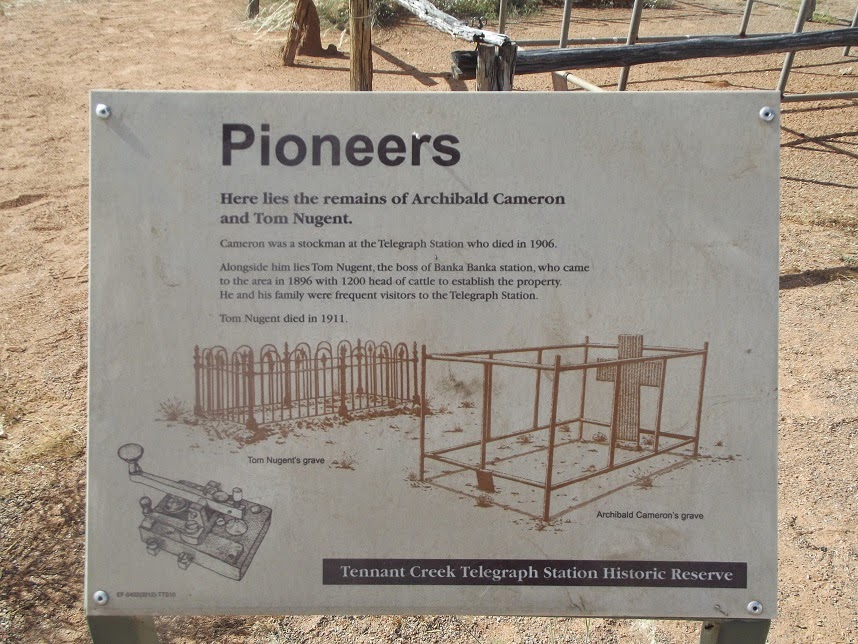I found this a very interesting visit after wondering if it was worth going in at all. To see the history around this place is so important and very humbling.
The Telegraph Station was established in the 1870's when the Overland Telegraph Line was first constructed. Apart from the construction parties and local Aboriginal inhabitants of the region, there were only the team manning the station.
Being isolated from the rest of the world, their supplies arrived every 6 months by camel train from Port Augusta.
The team manned the telegraph equipment 24 hours a day, needing to check and maintain the line itself, north and south of the station.
They were also responsible for maintaining a garden and a small herd of sheep and cattle to provide fresh food, from which they also supplied rations to the local Aboriginal people and provide medical services in the absence of doctors. The blacksmith was responsible for repairing and making tools and equipment.
Buildings on site were The Cellar where they stored supplies such as flour, sugar and salt which arrived every 6 months plus the local produce from the garden, and stock which were slaughtered weekly.
The Cellar has been dug down below soil level to make use of the lower temperatures. Hot air would rise to the top and pass out through a vent at the top.
The Smoke House was used for smoking and salting, as a common method of preserving meat.
The Kitchen/Living area were of Georgian design from that time period in England. They had thick walls and high ceilings with the stone for the buildings being quarried nearby plus the lime and sand mixed to form a mortar to bind the rocks. The lime being produced locally in a lime pit.
After the Telegraph Office Staff vacated these buildings they were used as a homestead for a local pastoralist.
The Telegraph Office was the hub of the station being manned 24 hours a day and re-transmitted messages along the line to the next telegraph station. In the battery room there were large banks of Meidinger cells. Each one produced just over 1 volt so a lot of them were needed to produce the operating voltage of 120 V. Initially all messages had to be retransmitted manually by the operators. Later automatic repeaters were installed.
Other Buildings included associated work areas for the site and a shed for the wagon. One room is a men's hut for accommodating linesmen. Another room was the butchers area and the final room being the blacksmiths workshop.
The Cemetery lies approx. 100 metres to the west where Archibald Cameron (a linesman) and Brian Thomas Nugent (from Bank Banka Station) are buried.
In the post war period the then cattle station supplied beef to the people in the township of Tennant Creek.
The Cellar

The smoke house
The out buildings













No comments:
Post a Comment